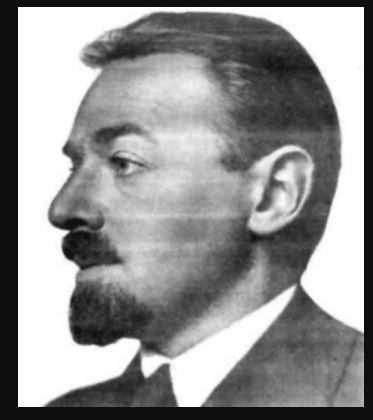The Brain’s Control of Movement and the MGS
[Please read the previous post to understand this one better]
Muscle- or motor-activity of the body is controlled by the central nervous system (CNS) which consists of the brain and spinal cord, and motor control research attempts to analyze how the CNS produces meaningful, coordinated movements of the body. The issue of coordination was first described in 1967 by a famous Russian neurophysiologist and pioneer in motor control theory, Nikolai Bernstein, who stated that the “difficulty” with co-ordination resulted from the many degrees of freedom that the brain had to choose from. What did he mean by “degrees of freedom”? These can refer to the number of joints and the muscles that move them; or the path and speeds at which the various body parts move; or the number nerve cells (neurons) involved in sending messages from the brain to the muscles that need to move.

Since those early days of motor control and biomechanics (a term coined by Bernstein), the current understanding of the situation is that while it may be considered a “difficulty” by scientists attempting to unravel the marvels of the human CNS, it is actually a great blessing for the body to have many options, especially when some “obstacles” are involved. If for instance, one is carrying a mug of coffee in the hand and has to walk over uneven terrain or push open a door while trying not to spill coffee, it is very useful if the brain can make a COMBINATION of varying shoulder, elbow and wrist movements in order to deal with the situations presented, and prevent us from getting burned by spilling coffee! This is why the degrees of freedom “problem” is now considered a case of “motor abundance” with the brain choosing suitable options based on the obstacles or “constraints” or “perturbations” it needs to overcome. These constraints can be related to the person performing the movement (who could be, for instance, anxious, sleepy, fatigued or injured); the task (which could range from a small putt to a full swing); and the environment (wind condition, wet fairway and slope on which the golfer stands, among others).
Several newer theories have all attempted to understand motor control. One that is gaining a rapid foothold is the Uncontrolled Manifold (UCM) hypothesis refined, in part, by Mark Latash et al. (see his detailed video of the theory as well as his description of the simple coffee mug scenario): https://www.youtube.com/watch?v=SpRIBpp83uM). This hypothesis states that the CNS chooses from, and uses, all the degrees of freedom, based on the situation that exists, in order to achieve a particular goal (such as hitting a ball with a club). No degrees of freedom are omitted, and they are all “managed” or “coordinated” in order for the goal to be achieved.

The CNS basically makes all attempts to have synergy between the joints along the uncontrolled manifold (no need to worry about what a manifold is at this stage) in order to achieve the task which is - you got it - to keep the mug upright. It does so by allowing as much variability in joint positions as required at the three joints mentioned, but makes sure that the COMBINATION of joint angles is controlled. For instance, some joints might move more and at greater speed while others might move less or at a slower speed in order to KEEP THAT DARNED COFFEE MUG UPRIGHT! Along an “orthogonal dimension” (also not important to understand) no synergy exists between the joints.
So, because the CNS seeks to conserve the outcome at all costs, and stabilizes the COMBINATION of joint angles (along the UCM) that are important to the outcome, variability along the UCM is acceptable and well managed, in order to safeguard the goal. However, any variance in the orthogonal dimension (even if we won’t worry too much about its definition for now) will have an effect on the outcome of the skill (Motor abundance and control structure in the golf swing by Andy Morrison et al, 2016).
- The following is a personal opinion based on the following: Most UCM research is on single-handed tasks involving only the upper limb, so here goes regarding how the brain controls our swings:
- Remember how the brain ascribes limited resources to the trunk as compared to the limbs (previous post)?
- Based on brain resources, could we possible conceive of the arms as forming the UCM so that the brain would preferentially synergize the movements of the shoulders, elbows and wrists in order to deliver the club in a repeating manner to the ball?
- Could then, the trunk be considered “orthogonal”? This makes sense from both a common-sense perspective and because of the CNS’s overall design. Common sense because who wants the platform of a movement moving while the arms are trying to deliver the club to the ball with great precision? Cos design because the brain was probably not designed with the golf swing in mind, and therefore does not bother to send huge amounts of nerve impulses to body-based movements such as weight shift, torso rotation and upward movement of the trunk?
How perfectly wonderful then if one completed all body-related movements at a relatively slow pace before the backswing even began, as part of one’s set-up routine. With a stable base of support and no in-swing movement of the “orthogonal dimension”, the brain could absolutely “have at it” and be free to vary all shoulder/elbow/wrist positions along the “UCM”, based on the obstacles to be overcome such as one’s fatigue level, the length of the backswing, and the slope of the ground beneath the feet. Which, of course, brings us to the Minimalist Golf Swing, which does exactly that. It is truly so brilliant that only God could have devised it and had a small human creature disseminate the message!
